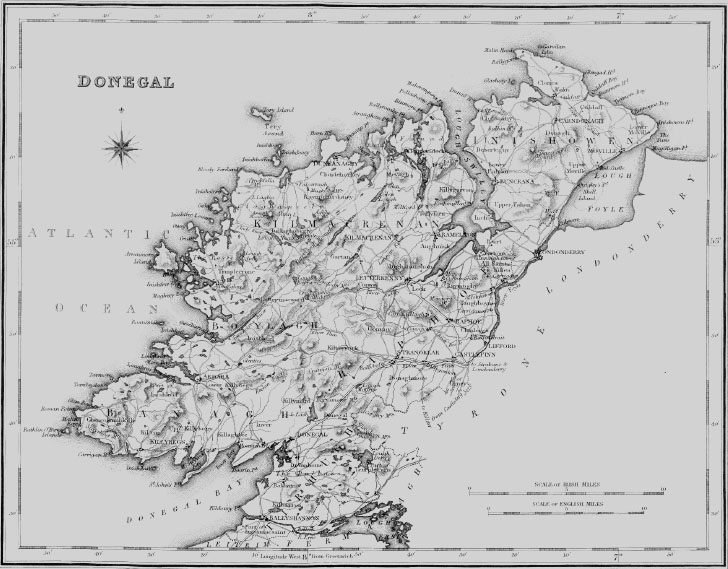| Accompanying Lewis map for Donegal 
|
| KILLYGARVAN |
| KILLYGARVAN, a parish, in the barony of KILMACRENAN, county of DONEGAL, and province of ULSTER ; 12 miles (N. E. by N.) from Letterkenny ; containing, with the town of Rathmullen, 3643 inhabitants. According to the Ordnance survey it comprises 9132 statute acres. It is in the diocese of Raphoe, and was formerly part of the corps of the deanery, from which it was separated by act of council, in 1835, and is now a rectory and vicarage, in the gift of the Crown: the tithes amount to £154. The church is a plain building, for the erection of which the late Board of First Fruits gave £300, and lcnt £500, in 1813. The Board also gave £450, and lent £50 for the erection of a glebe-house, in 1818: the glebe comprises 5a. 1r. 17p. In the R. C. divisions it forms part of the union or district of Tullyaughnish, and has a chapel. There is a meeting-house for Presbyterians in connection with the Synod of Ulster, of the third class, and one for Wesleyan Methodists. About 110 children are educated in two public schools, one of which is supported by donations from Col. Robertson's fund, and about 70 in a private school ; there is also a Sunday school. |
| RATHMULLEN |
| RATHMULLEN, a small sea-port, in the parish of KILLYGARVAN, barony of KILMACRENAN, county of DONEGAL, and province of ULSTER, 5 miles (N.) from Ramelton : the population is returned with the parish. It is situated on the western shore of Lough Swilly, and consists of one main street : it has a penny post to Ramelton, and is both a constabulary police and coast-guard station, the latter being included in the district of Dunfanaghy : petty sessions are held here. There are sonic remains of a religious house built by Mac Swine Fanagh, for Carmelites or White friars, and dedicated to the Blessed Virgin ; also of a castle, said to have been built by him, which was destroyed at the time of' the Reformation, but afterwards rebuilt by Bishop Knox. Part of this castle was for some time used as the parish church, previous to the erection of the present edifice. |
|